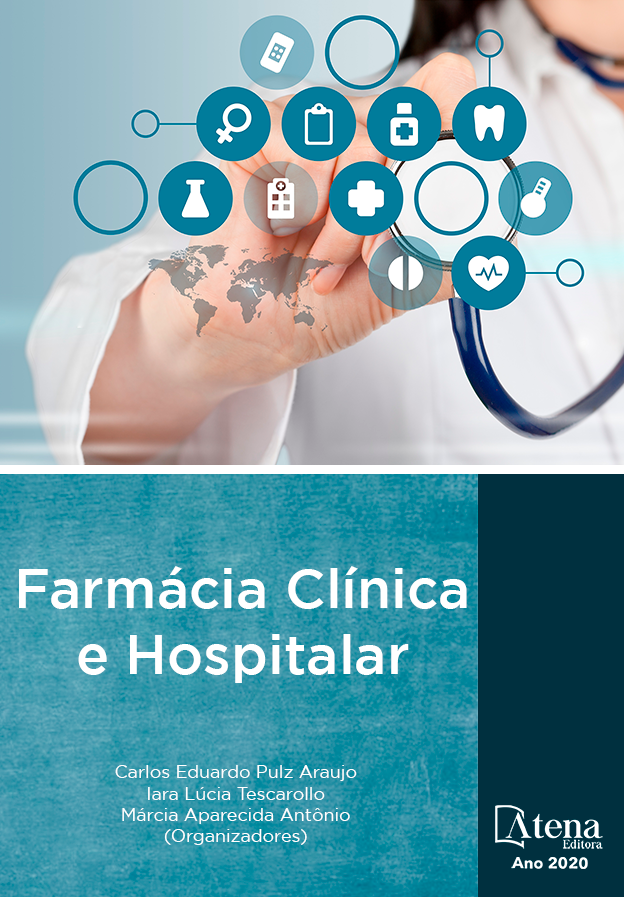
CONTROLE GLICÊMICO DE PACIENTES DIABÉTICOS E NÃO DIABÉTICOS ATENDIDOS NA FARMÁCIA ESCOLA DA UNIOESTE
A aferição da glicemia capilar em farmácias comunitárias auxilia no acompanhamento de diabéticos, mas pode também ser útil no rastreamento de casos suspeitos desta doença. O objetivo deste trabalho foi verificar o controle glicêmico de pacientes atendidos na Farmácia Escola da Universidade Estadual do Oeste do Paraná (UNIOESTE), em Cascavel-PR. Estudo transversal e retrospectivo, no qual coletou dados das declarações de serviço farmacêutico, referente às aferições de glicemia capilar realizadas na Farmácia Escola da UNIOESTE, nos anos de 2016 e 2017. Foram coletados dados de sexo, idade, informação referida pelo paciente de diabetes mellitus (DM) e valor aferido de GC. A glicemia capilar foi aferida com aparelho Accu Chek Active® (Roche). Em indivíduos com DM, considerou-se como glicemia controlada valores entre 80 e 130 mg/dL (para jejum) e < 180 mg/dL (para pós-prandial). Indivíduos que referiram não ser diabéticos, considerou como glicemia controlada valores < 100 mg/dL (para jejum) e <140 mg/dL (para não jejum). Os dados foram analisados nos softwares ExcelÒ e SPSSÒ 13, por meio de estatística descritiva. Foram analisados dados de 608 pacientes, sendo a maioria homens (67,1%), em idade >= 60 anos (66,2%) e que referiram ser diabéticos (70,4%). Verificou-se que aproximadamente 62% dos pacientes estavam com a glicemia controlada. Entre os não controlados, 78,9% eram pacientes com DM referida e 21,1% eram pacientes que referiram não ser diabéticos. Entre os pacientes com DM referida, 41,4% estavam com a glicemia não controlada. O controle glicêmico dos pacientes atendidos na farmácia escola da UNIOESTE é de apenas 62%, e em diabéticos 58,6%. A avaliação da farmacoterapia pode melhorar aspectos importantes da não adesão ao tratamento e consequentemente melhores resultados clínicos.
CONTROLE GLICÊMICO DE PACIENTES DIABÉTICOS E NÃO DIABÉTICOS ATENDIDOS NA FARMÁCIA ESCOLA DA UNIOESTE
-
DOI: 10.22533/at.ed.6102009105
-
Palavras-chave: Diabetes Mellitus; controle do nível glicêmico; diabéticos; farmácia universitária; rastreamento
-
Keywords: Diabetes Mellitus; glycemic level control; diabetics; university pharmacy; screening
-
Abstract:
The measurement of blood glucose in community pharmacies assists in monitoring of diabetics, but can also be useful in tracking suspected cases of this disease. The aim of this work was to verify the glycemic control of patients seen at the Pharmacy School of the Western Paraná State University (Unioeste) in Cascavel-PR/Brazil. This cross-sectional and retrospective study collected data from pharmaceutical service statements on capillary blood glucose measurements performed at the Pharmacy School of UNIOESTE, in 2016 and 2017. It were collected data on gender, age, diabetes mellitus (DM) reported by the patient and the measured value of GC. Capillary blood glucose was measured with an Accu Chek Active® device (Roche). Glycemia was considered controlled in individuals with DM ranging from 80 to 130 mg/dL (for fasting) and <180 mg/dL (for non-fasting). Individuals who reported not being diabetic, values of <100 mg/dL (for fasting) and <140 mg/dL (for non-fasting) were considered as controlled glucose. The data were analyzed using ExcelÒ and SPSSÒ 13, using descriptive statistics. Data from 608 patients were analyzed, most were men (67.1%), aged >=60 years (66.2%) and who reported being diabetic (70.4%). The data showed that approximately 62% of patients had controlled blood glucose levels. Among individuals with uncontrolled blood glucose, 78.9% were patients with reported DM and 21.1% were patients who reported not being diabetic. Among patients with reported DM, 41.4% had uncontrolled blood glucose levels. The glycemic control of patients seen at the Pharmacy School of UNIOESTE was only 62%, and in diabetics it was 58.6%. The evaluation of pharmacotherapy can improve important aspects of non-adherence to treatment and consequently obtain better clinical results.
-
Número de páginas: 12
- Arianne Prizak Ferreira
- Patricia Guerrero de Sousa
- Ionete Lucia Milani Barzotto
- Simone Maria Menegatti De Oliveira
- Alexandre Maller


